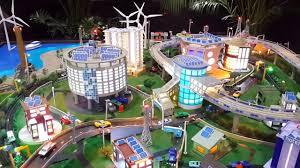Do you remember your school project of creating buildings and architecture from cardboard and scrap materials? That was our first exposure to the world of scale models for education. The concept is similar, as we represented our school projects and explained to every participant what the model was and how it functioned. The idea remains the same to simplify complex engineering through visual representations which can be operated and touched. But have you ever analyzed why were scale models used to demonstrate a school project?

We have been making use of scale models in our education system for ages, scale models are a medium to educate the masses on complex objects so that we identify the pros and cons of the undertaken project. Let us investigate the benefits of building scale models for education and visualization.
1. Scale Models give wing to creativity
The basics of a scale model is art. A human brain can process a picture in 13 milliseconds, any object presented through visuals can get registered in our memory much faster. Scale models are therefore used in projects, and science experiments to help identify the larger infrastructures. We often have miniature toys for infants like a bus, building, or a dinosaur which are smaller objects of a bigger body, to help the child register the image of the object. The sense of art gets developed the moment we touch and feel any object. Scale models provide the liberty to touch and design it, enhancing art in education.
2. Understanding of Processes
Scale models are perfect examples of decoding concepts. Architecture is based on engineering concepts and these concepts get simplified with scale models. These miniature models exemplify complex processes end to end and help the audience in understanding the protocols through simplified illustrations. Scale models act as miniature specimens to describe the engineering fundamentals. It is hence used largely in the field of education to untangle compound processes.

3. Contributes to brain development
An individual working on a scale model needs to activate the framework of design and functioning, it includes permutation and a combination of applications and predictions which acts as a brain development exercise of getting complex creations to a miniature size. Scale models thus help in the brain development of a student studying for any course or degree.
4. Presentation of Ideas
Scale models are a mirror of ideas you plant in your brain. Scale models trigger the activation of innovative ideas in a kid while he is schooling, it gives them the boost to create something of their own which is tangible. Students find an inclination toward science and mathematical projects due to the visual representation quality of scale models. Abstract concepts can be simplified using scale model demos.
5. Communication confidence
With working on the scale model building, the concept of the scale model architecture needs to be explained to colleagues in a manner that is clear and understandable. Which in turn boosts confidence in speech and clarity of thoughts, which are important elements of education. A concept effectively communicated decodes the purpose of scale models.
Scale models in education can effectively be used to form future engineers and architects, they are useful in depicting accurate concepts and information, and even complex subjects like science and mathematics can be simplified using scale models. Educating through visuals leaves a more impactful understanding of the topic. Additionally, it keeps students engaged and inclined towards education due to the art and creativity which it offers.